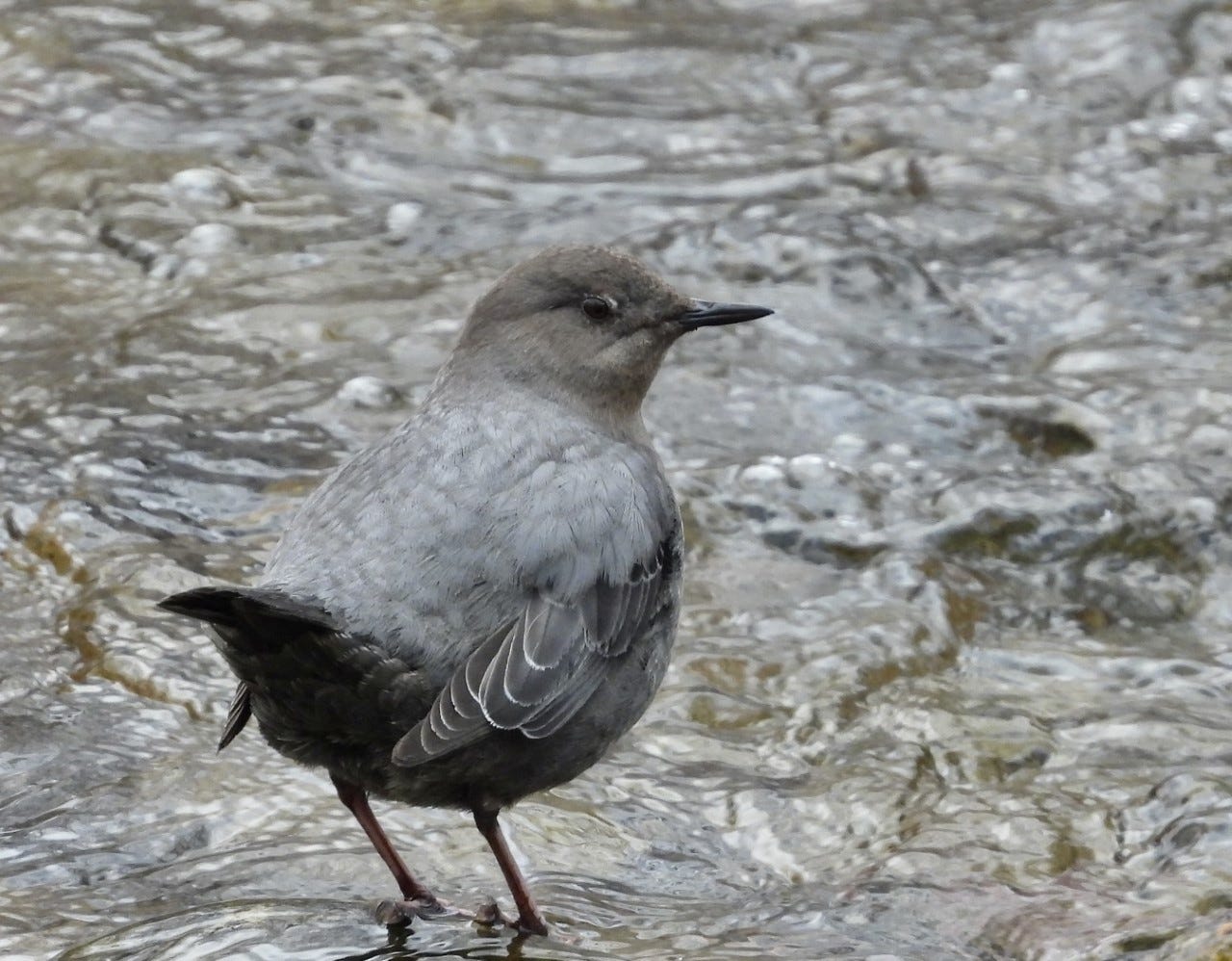Running on a winter morning
While out running the other day, I crossed a snow-covered bridge and heard a snippet of birdsong. The singer sounded rusty, as though it was just starting to tune its instrument. But truncated though the notes were, they revealed the bird’s identity, and I turned around, hoping for a look at the intrepid songster. Knowing the bird’s habits and haunts, I located the American Dipper within seconds as it perched next to a patch of open water along an ice-covered stream. And then, the bird burst into its full, cheerful song—a rushing, tumbling, burbling cascade of notes that evokes the streams where the gray-cloaked waterbird lives.
North America’s only truly aquatic songbird, the inimitable dipper swims, dives, and feeds in rushing, unpolluted streams in western North America. One of the few birds that sings in winter (both males and females sing), the American Dipper (or Water Ouzel as it once was known) was conservationist John Muir’s favorite bird. No bird cheered him more during his lonely wanderings, and Muir writes exuberantly about the “singularly joyous and lovable little fellow” in his book, The Mountains of California. I watched my dipper dive into the frigid water, like a tiny penguin leaping off an iceberg. Moments later, it reappeared and paddled in the water like a duck before returning to the snowy shore. I continued on my run with lighter feet. Any day I see a dipper is a good day.
The dipper struck me as the perfect topic for my first Words for Birds newsletter since this missive now begins where my forthcoming book Feather Trails ends (I write about my work with dippers in the epilogue). These writing efforts are all about birds: what makes them so appealing and captivating to us, the multi-faceted threats they face, and what we can do to help conserve them and restore their diminished numbers.
Take a small step to help birds
It is easy to feel helpless in the face of climate change, habitat destruction, and disappearing wildlife. But according to the US Fish and Wildlife Service, over 96 million of us watch birds. If each of us does something to help them, we may be able to reverse their declining numbers.
Since I’m writing about a stream-living bird, here are a few things you can do to help birds that frequent riparian areas:
If you live, work, or recreate along waterways, please pick up trash, especially fishing line, which can entangle birds.
If you live along a waterway, please keep the streambanks as wild as possible. Weed away non-native species if you can, encourage native plant growth, and keep grazing animals away from stream edges.
Many wild animals live in riparian areas or use them as travel corridors. When you drive past or through riparian areas, go a little slower to avoid collisions with wildlife.
Thank you for reading and thanks for helping birds!
Until next time …
P.S. My new book Feather Trails—A Journey of Discovery Among Endangered Birds will be published May 2, 2024, and is now available for pre-order on Amazon. Please help spread the word!






"Like a tiny penguin leaping off an iceberg." Ha! Love it. I really liked how you ended your post with some concrete actions people can do to help. Keep up the good work!
Hooray for Dippers! What a great bird to choose for your first newsletter/blog!! All those days hiking the Bitterroot Valley streams to search out this enchanting denizen of the mountains certainly had an impact on your love of birds and your passion for their conservation! So excited about your new book and to receive more WORDS FOR BIRDS!! Congratulations Sophie!!